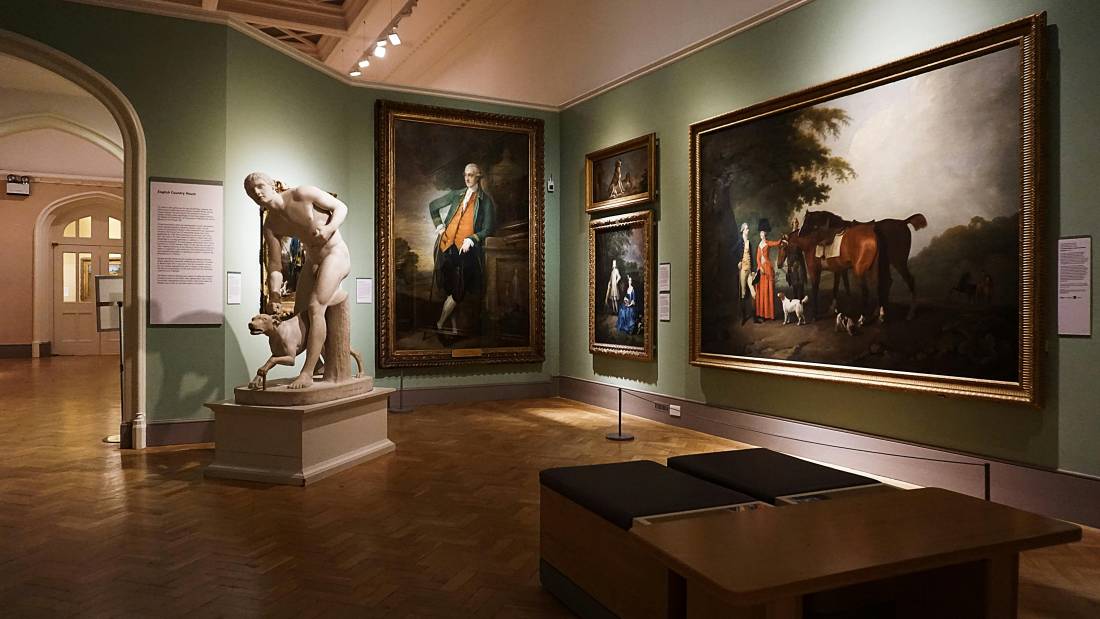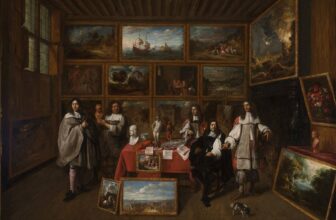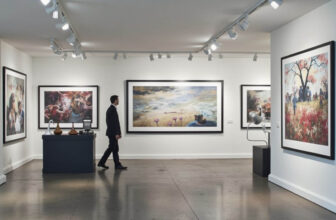
Traveling the World to Find Profitable Art
Turning Global Exploration into a Lucrative Investment
Art has long been considered a timeless treasure, something that holds both emotional and financial value. But what if art wasn’t just about collecting beautiful pieces for your home or gallery? What if traveling the world to find unique and undervalued artworks could actually turn into a profitable business venture?
Today, the art market is more global than ever. From bustling city galleries to hidden artist communities in remote villages, opportunities to discover rare, high-value pieces are scattered across continents. This guide explores how traveling the world can turn art into profit and highlights the best cities to discover profitable art for collectors, investors, and creative entrepreneurs.
Why Traveling the World for Art Is a Smart Investment Strategy
Unlike mass-produced goods, authentic artwork often carries cultural stories, artistic craftsmanship, and rarity, making it a powerful investment. When you travel globally, you gain access to:
Emerging art markets with undervalued pieces.
Local galleries and artists who haven’t yet entered the mainstream.
Exclusive events like art fairs, auctions, and biennales.
Cultural perspectives that give your collection a diverse, unique character.
Global travel opens doors to discovering, negotiating, and acquiring art directly, often at a fraction of the price compared to established markets. Once curated, these works can be resold in higher-value markets, displayed in galleries, or held as appreciating assets.
Understanding the Global Art Market
The global art market is a multi-billion-dollar industry. According to recent reports, its value continues to rise steadily, fueled by online marketplaces, international fairs, and an expanding pool of collectors.
Key Market Trends:
Globalization of collectors: Art buyers now come from every corner of the world, not just Europe or North America.
Digital platforms: Online sales have made it easier to sell internationally.
Emerging markets: Countries with rising middle and upper classes are fueling demand for unique, high-quality art.
Cultural tourism: Travelers are increasingly combining vacation with art discovery.
To succeed, investors must understand how markets differ, a painting in a small gallery in Asia may cost a fraction of its eventual resale value in New York or London.
How Traveling the World Can Turn Art into Profit
The process of turning global art travel into profit involves more than just buying and selling. It requires strategy, networking, and market knowledge.
1. Spotting Undervalued Art
Many artists create extraordinary work that hasn’t yet reached international attention. When traveling, visiting local art fairs, student exhibitions, and community galleries can help you spot hidden gems early.
For example, many collectors who purchased works from emerging artists in places like Berlin or Mexico City years ago are now sitting on assets that have multiplied in value.
2. Building Relationships with Artists
Traveling allows you to connect directly with artists. This personal connection can:
Lead to exclusive deals and early access to new collections.
Build trust, ensuring authenticity and better pricing.
Allow you to commission unique works that are one of a kind.
Unlike gallery purchases, buying directly can eliminate extra commissions, increasing potential profit margins.
3. Taking Advantage of Currency Differences
Exchange rates can work to your advantage. For example, purchasing art in countries where the local currency is weaker compared to your home currency can make acquisitions more affordable while retaining strong resale potential internationally.
4. Reselling in High-Value Markets
Once you’ve acquired unique artwork, you can resell through:
Major auction houses like Christie’s and Sotheby’s
Online marketplaces and global art platforms
International galleries and exhibitions
Private collectors looking for exclusive pieces
The key is to buy low in emerging or local markets and sell high in established or online global markets.
5. Art as an Appreciating Asset
Unlike some investments that fluctuate rapidly, well-selected art can gain value steadily over time. Artists often become more recognized as their careers grow, and early investors can reap significant rewards.
The Best Cities to Discover Profitable Art
Some cities are renowned for their rich art scenes, vibrant communities, and emerging talent. If you’re planning to travel for profitable art discovery, these destinations should be on your radar:
1. New York City, USA
New York City remains a global art capital. With institutions like The Museum of Modern Art and The Metropolitan Museum of Art, along with hundreds of private galleries, this city attracts art lovers and investors from around the world.
Why it’s profitable:
NYC sets many global trends in contemporary art. Buying directly from local galleries or artists before they rise to fame can yield major returns.Where to look:
Chelsea Gallery District
Lower East Side galleries
Brooklyn art collectives
Major fairs like The Armory Show
2. Paris, France
Paris has been an art hub for centuries. Known for Impressionism, modernism, and its romantic artistic vibe, Paris combines traditional and contemporary art scenes.
Why it’s profitable:
Paris hosts a variety of emerging artists alongside established masters. Many European collectors still prefer sourcing pieces here.Where to look:
Le Marais galleries
Montmartre artist squares
International fairs like FIAC (Foire Internationale d’Art Contemporain)
3. Berlin, Germany
Berlin is one of Europe’s most dynamic art cities, known for its affordable art scene and experimental artists.
Why it’s profitable:
Prices are often lower than in Paris or London, but the talent pool is immense. Investors often find early-stage artists here who later gain global recognition.Where to look:
Kreuzberg and Neukölln art districts
Artist-run spaces
Annual Berlin Art Week
4. London, UK
London blends classic and contemporary art perfectly. Home to world-class auction houses like Christie’s and Sotheby’s, it’s a strategic location for both buying and reselling.
Why it’s profitable:
London’s art scene connects European and global collectors. High liquidity in the market makes flipping art easier.Where to look:
Shoreditch street art
Mayfair galleries
Annual Frieze London
5. Tokyo, Japan
Tokyo offers a unique fusion of modern and traditional Japanese art. Its avant-garde art scene attracts international attention.
Why it’s profitable:
Collectors can find exquisite craftsmanship and contemporary pieces that appeal strongly to global buyers.Where to look:
Ginza and Roppongi districts
Art spaces in Harajuku and Shibuya
Tokyo Art Fair
6. Cape Town, South Africa
Cape Town has become a thriving art center for African contemporary art.
Why it’s profitable:
The international art world is increasingly embracing African artists. Early investors in Cape Town’s art scene can benefit greatly.Where to look:
Woodstock creative district
Local art fairs
Zeitz Museum of Contemporary Art Africa
7. São Paulo, Brazil
São Paulo is one of the most vibrant art hubs in South America.
Why it’s profitable:
Brazilian artists are gaining strong international recognition. Economic fluctuations can offer lower entry prices.Where to look:
Vila Madalena neighborhood
Art Biennial exhibitions
SP-Arte
8. Hong Kong, China
Hong Kong is an international gateway between Eastern and Western art markets.
Why it’s profitable:
Hong Kong is a tax-free art hub, attracting major global collectors and auction houses.Where to look:
Central district galleries
International auction houses
Art Basel Hong Kong
Tips for Making Art Travel Profitable
Simply traveling isn’t enough, you need strategy and insight. Here are practical tips to turn your artistic adventures into sustainable profit:
1. Do Thorough Market Research
Before traveling, research:
Average pricing of artworks in the region
Popular local artists and emerging talent
Major art fairs and galleries happening during your visit
Currency exchange rates and import/export taxes
This preparation can help you spot good deals and avoid overpaying.
2. Learn How to Verify Authenticity
Buying authentic art is crucial. Whenever possible:
Request certificates of authenticity.
Document the transaction.
Verify provenance (the piece’s ownership history).
Work with reputable galleries or directly with artists.
3. Budget for Shipping and Insurance
Art isn’t like buying souvenirs. Proper packaging, shipping, and insurance are vital to protect your investment. Many galleries and fairs offer international shipping services, but comparing costs beforehand can save you money.
4. Build a Network
Networking is a cornerstone of profitable art travel:
Attend private viewings and gallery openings.
Join art collector communities.
Build relationships with curators, artists, and other investors.
Strong connections can give you early access to high-value pieces.
5. Consider Storage and Preservation
Proper storage is key to maintaining the value of your collection. Whether you’re holding art for appreciation or waiting to resell, ensure you have climate-controlled storage and professional handling.
6. Learn About Taxes and Legalities
Different countries have different tax laws and regulations on importing or exporting art. Consult professionals or research:
Import duties and customs fees.
Tax deductions for art investments.
Legal documentation required for resale.
Investing in Emerging Artists: A Smart Long-Term Play
Some of the most profitable art investments are not blue-chip artists but emerging creators who have not yet reached international fame. Traveling gives you the unique advantage of discovering these artists early.
When evaluating emerging artists:
Look for consistent quality and unique style.
Consider their exhibition history and media coverage.
Assess their career trajectory.
Early supporters often gain access to works at much lower prices, which can appreciate significantly over time.
Combining Travel, Passion, and Profit
Traveling the world to find profitable art isn’t just about making money, it’s about immersing yourself in diverse cultures, stories, and creative expressions. Unlike stocks or crypto, art is tangible, beautiful, and meaningful. It’s an investment that can enrich your life in multiple ways.
By exploring cities known for their artistic vibrancy, networking with creators, and understanding the global market dynamics, you can turn your passion for travel and art into a rewarding business.
The global art world is vast, and opportunities to find undervalued, high-potential pieces are everywhere, from the bustling streets of New York to the hidden alleys of Marrakech. With careful research, cultural curiosity, and smart strategy, traveling the world can become more than an adventure; it can be your gateway to financial freedom through art investment.




